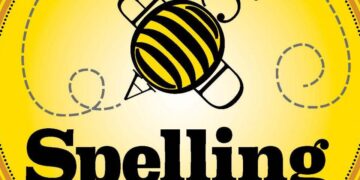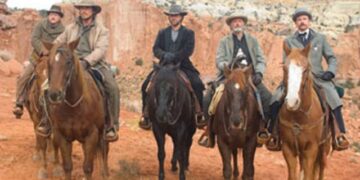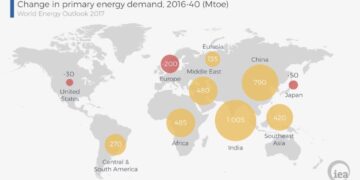In an era marked by unprecedented environmental challenges, the delicate balance of our ecosystems hangs in the balance. As species face increasing threats from habitat loss, climate change, and human activity, a collaborative approach integrating ecology, statistics, and interdisciplinary research emerges as a beacon of hope. Recent initiatives at the University of Cape Town (UCT) are showcasing how such collaboration can effectively address the urgent need for species conservation. By combining rigorous data analysis with ecological expertise, researchers are developing innovative strategies that not only aim to protect endangered species but also restore the fragile ecosystems they inhabit. In this article, we will explore how the synergy among these disciplines is paving the way for more effective conservation efforts, potentially turning the tide for wildlife on the brink of extinction.
Harnessing Ecological Insights to Combat Species Decline
Understanding the complex interactions within ecosystems is crucial for addressing the alarming rate of species decline. By applying ecological insights, researchers can identify the underlying factors contributing to habitat loss, species extinction, and biodiversity erosion. Such insights typically involve examining relationships between organisms, their environment, and human impacts. These findings can help shape conservation strategies that are not only scientifically sound but also tailored to the specific needs of vulnerable species. Key areas of focus include:
- Habitat restoration: Utilizing ecological data to rehabilitate environments, fostering resilience.
- Species reintroduction: Employing statistical models to determine optimal conditions for species recovery.
- Community engagement: Collaborating with local populations to promote stewardship and awareness.
Moreover, interdisciplinary collaboration amplifies the impact of ecological research by integrating diverse methodologies and perspectives. For example, partnerships between ecologists, statisticians, and social scientists can lead to innovative conservation techniques that are both effective and sustainable. One promising approach involves using data analytics to predict species responses to environmental changes, as highlighted in the table below, which outlines some species and their critical threats alongside potential interventions:
| Species | Critical Threats | Potential Interventions |
|---|---|---|
| Amur Leopard | Habitat Loss, Poaching | Protected Areas, Anti-Poaching Patrols |
| Vaquita | Bycatch, Illegal Fishing | Fisheries Management, Enforcement |
| Sumatran Orangutan | Deforestation, Climate Change | Reforestation, Sustainable Forestry |
The Role of Statistical Models in Predicting Biodiversity Outcomes
Statistical models serve as vital tools in understanding and forecasting biodiversity outcomes, functioning as a bridge between ecological theories and practical conservation strategies. By processing complex ecological data, these models enable scientists to identify patterns and trends in species distribution, population dynamics, and habitat changes. This analytical approach assists in quantifying the effects of environmental factors—such as climate change, habitat destruction, and invasive species—on biodiversity. Key benefits of utilizing statistical models include:
- Enhancing Predictions: Improving the accuracy of forecasts regarding species survival and ecosystem health.
- Informing Policy: Providing empirical evidence that can guide conservation policies and resource allocations.
- Tailoring Interventions: Assisting in designing more targeted conservation efforts based on model outcomes.
Moreover, interdisciplinary collaboration amplifies the effectiveness of statistical models in biodiversity conservation. By integrating insights from ecology, statistics, and even social sciences, researchers can develop more holistic approaches to biodiversity management. Collaborative research initiatives often produce richer datasets, leading to more robust models. For example, partnerships with local communities can enhance data collection on species interactions and habitat use, while stakeholder engagement ensures that conservation efforts resonate with those directly impacted. A brief overview of successful case studies demonstrates this synergy:
| Case Study | Collaboration Type | Outcome |
|---|---|---|
| Great Barrier Reef | Ecologists & Marine Statisticians | Improved coral health predictions |
| Amazon Rainforest | Ecologists & Local Communities | Enhanced monitoring of species |
| Sahara Desert | Statisticians & Climate Scientists | Forecasting habitat shifts due to climate change |
Fostering Interdisciplinary Collaboration for Effective Conservation Strategies
In a world where biodiversity is under constant threat, the combined expertise of ecologists and statisticians is essential for crafting robust conservation plans. By leveraging ecological insights and statistical models, researchers can accurately assess species populations and their habitats. This interdisciplinary approach leads to the development of effective strategies that not only aim to preserve vulnerable species but also help restore ecosystems. Universities, such as UCT, play a pivotal role in encouraging collaboration between these fields, showcasing innovative projects that bring together data scientists, environmentalists, and policy makers to address complex conservation challenges.
To illustrate the impact of interdisciplinary collaboration, consider the following elements that are crucial in developing successful conservation strategies:
- Shared Knowledge: Facilitating workshops and joint research initiatives to foster understanding between ecologists and statisticians.
- Data Integration: Combining ecological field data with statistical analysis to create predictive models for species survival.
- Policy Support: Collaborating with policymakers to translate scientific findings into actionable conservation regulations.
A recent study highlighted the effectiveness of this collaborative approach, as shown in the table below:
| Collaboration Type | Outcome |
|---|---|
| Ecologist and Statistician | Enhanced species modeling accuracy |
| Ecologist and Policy Maker | Implemented conservation legislation |
| Statistician and Community Leaders | Increased public engagement in conservation |
Closing Remarks
the confluence of ecology, statistics, and interdisciplinary collaboration emerges as a crucial framework for conservation efforts in an era marked by biodiversity loss. As researchers at the University of Cape Town demonstrate, innovative approaches grounded in robust statistical analysis empower scientists to make informed decisions that can significantly impact endangered species and their habitats. By fostering collaborative environments where experts from various fields intersect, the path toward a more sustainable interaction with our planet becomes clearer. The urgency of the current ecological crisis demands that we harness these multifaceted strategies to not only protect vulnerable species but also to inspire collective action among communities and policymakers alike. The future of our planet depends on such comprehensive efforts; through unity and innovation, we can indeed turn the tide in favor of nature’s rich tapestry.















![[News] China Makes Breakthrough in Chip Technology, Paving the Way for Lithography Advancements – TrendForce](https://earth-news.info/wp-content/uploads/2025/11/324664-news-china-makes-breakthrough-in-chip-technology-paving-the-way-for-lithography-advancements-trendforce-360x180.jpg)















